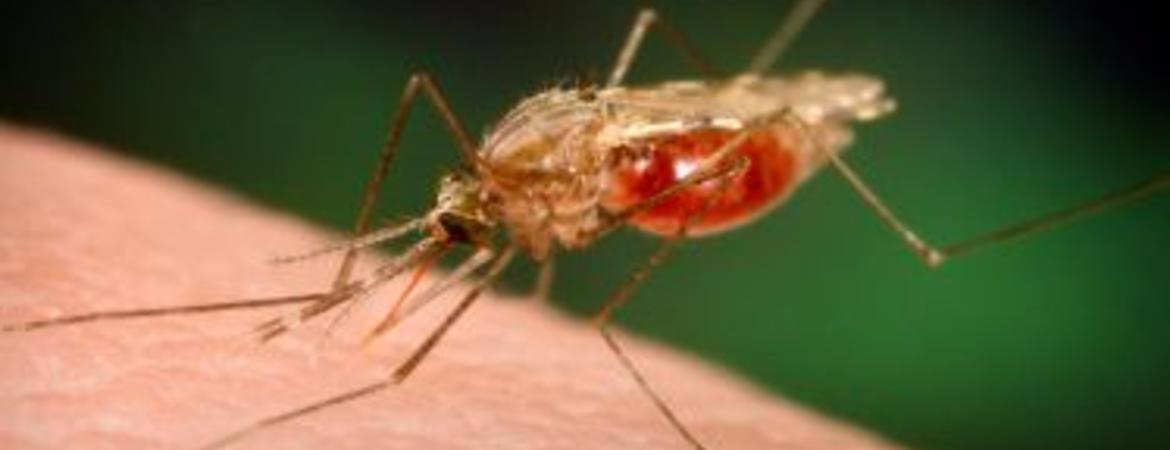
RIVERSIDE, Calif. — Entomologists at the University of California, Riverside have received a five-year grant of $2.44 million from the National Institute of Allergy and Infectious Diseases, or NIAID, to investigate the role hormones play in the female mosquito’s ability to use human blood for egg production.
Vector mosquitoes need vertebrate blood to develop each batch of their eggs. As a result, reproduction in female mosquitoes is closely linked to blood feeding. The NIAID funding — a competitive National Institutes of Health grant renewal — will allow the entomologists to introduce novel research tools for genetic manipulation, such as CRISPR, in their exploration of the genetic basis for the hormonal control of mosquito reproduction.
“A clear understanding of the molecular mechanisms regulating egg development in mosquitoes can play a critical role in our coming up with innovative and novel vector control methods,” said Alexander Raikhel, a distinguished professor of entomology who will lead the project along with Sourav Roy, an assistant professional researcher who received his doctorate at UCR and joined the Raikhel lab in 2011.
The research project, titled “Molecular Basis of Ecdysteroid Action in the Mosquito,” is expected to help
Raikhel, Roy, and others in Raikhel’s lab identify targets that can block the reproduction of female mosquitoes, thereby resulting in significant declines in mosquito populations and the dangerous diseases they transmit.
Mosquitoes pose an enormous threat to humans on a global scale, killing about a million people each year. The two notable vectors of the most devastating mosquito-borne diseases to humans are Aedes aegypti — the principal vector for dengue, yellow fever, chikungunya virus, and, recently, Zika virus — and Anopheles gambiae, the vector for malaria.
The menace of mosquito-borne diseases has increased over the years due to fast-growing insecticide resistance, social complexities, climate change, and the lack of effective vaccines. Mosquitoes are largely present in countries with extreme poverty and, hence, cause severe morbidity and economic loss that impede further development.
“Alleviating these diseases is not only critical for protecting human life, but also for improving social progress in vulnerable communities,” said Raikhel, the UC Presidential Chair and the Mir Mulla Endowed Chair in the Department of Entomology. “Recent expansion of Aedes mosquitoes northward from Central America has become a looming threat generating a major public health concern.”
In 2016, a $1.1 billion spending effort to reduce the effects and spread of Zika was put forth after outbreaks in both Florida and Texas. The Centers for Disease Control and Prevention predicted migration of both disease vectors — the yellow-fever mosquito Aedes aegypti and the tiger mosquito Aedes albopictus — into many parts of the United States by 2017, and gave high priority to the development of vector control methods.
Roy, a broadly trained computational biologist and an expert on mosquito genomics who has worked on research related to gene regulation for more than 10 years, noted that a complete collapse of the mosquito population would be an ideal but largely unachievable outcome of the research.
“Rapidly proliferated organisms such as mosquitoes are fast-evolving and develop resistance to many control approaches,” he said. “A good example is resistance to pesticides, the development of which has devastated mosquito control and resulted in a mosquito population explosion. It is an unrealistic goal to see the complete end of vector mosquitoes. A significant decline in their population, however, is realistic . Combined with novel insecticides for mosquitoes and vaccines and anti-pathogen drugs, such approaches could significantly reduce mosquito populations and incidence of diseases they transmit.”
Raikhel explained that mosquitoes serve as vectors for harmful human diseases because disease pathogens use female mosquitoes for the obligatory stages of their life cycles. Each egg development cycle produces 100-150 eggs and transpires 3-4 times during a female’s lifespan.
“Therefore, specifically targeting mosquito reproduction can have a significant impact on reducing the current and future populations,” he said. “Since Aedes aegypti can transmit multiple viral diseases that circulate in the same geographical region, removing the vector entirely from the field can serve as an effective method to limit the spread of all viral diseases.”
In Aedes aegypti females, two major insect hormones — the juvenile hormone and the steroid hormone ecdysone — control reproduction and egg development. Female mosquitoes are unique in that they undergo a three-day maturation period after they emerge from pupae. Juvenile hormone, which occurs only in insects, regulates this stage. In particular, it does so by regulating genes that are essential for subsequent reproduction steps.
“As a result, female mosquitoes become ready for seeking hosts, blood feeding, and subsequent egg development,” Roy said. “They also develop into a disease transmitting vector. Thus, this feature of mosquito reproduction presents an exceptional opportunity for manipulating mosquito egg development with the goal of interrupting reproduction.”
After female mosquitoes take a blood meal, it is ecdysone that controls egg development. During this post-blood feeding stage, genes responsible for mosquito egg development undergo their sequential activation and shut down.
“We have identified several factors and hormones involved in these functions, such as insulin and ecdysone,” Raikhel said. “We discovered that ecdysone not only activates some genes but also shuts down others in the course of the reproductive cycle. In our previous studies, we worked out the mechanism by which ecdysone activates mosquito genes. But how ecdysone represses genes has not been observed in any insect, including mosquitoes.”
In the present grant cycle, the Raikhel lab intends to clarify this repressive action of ecdysone.
“It is possible that in understanding how important genes can be shut down naturally, we would get a clue to how this process can be manipulated to block egg development,” said Raikhel, a member of the National Academy of Sciences.
Raikhel and Roy will be joined in the research by two postdoctoral scholars, a graduate student, and several undergraduate students.



